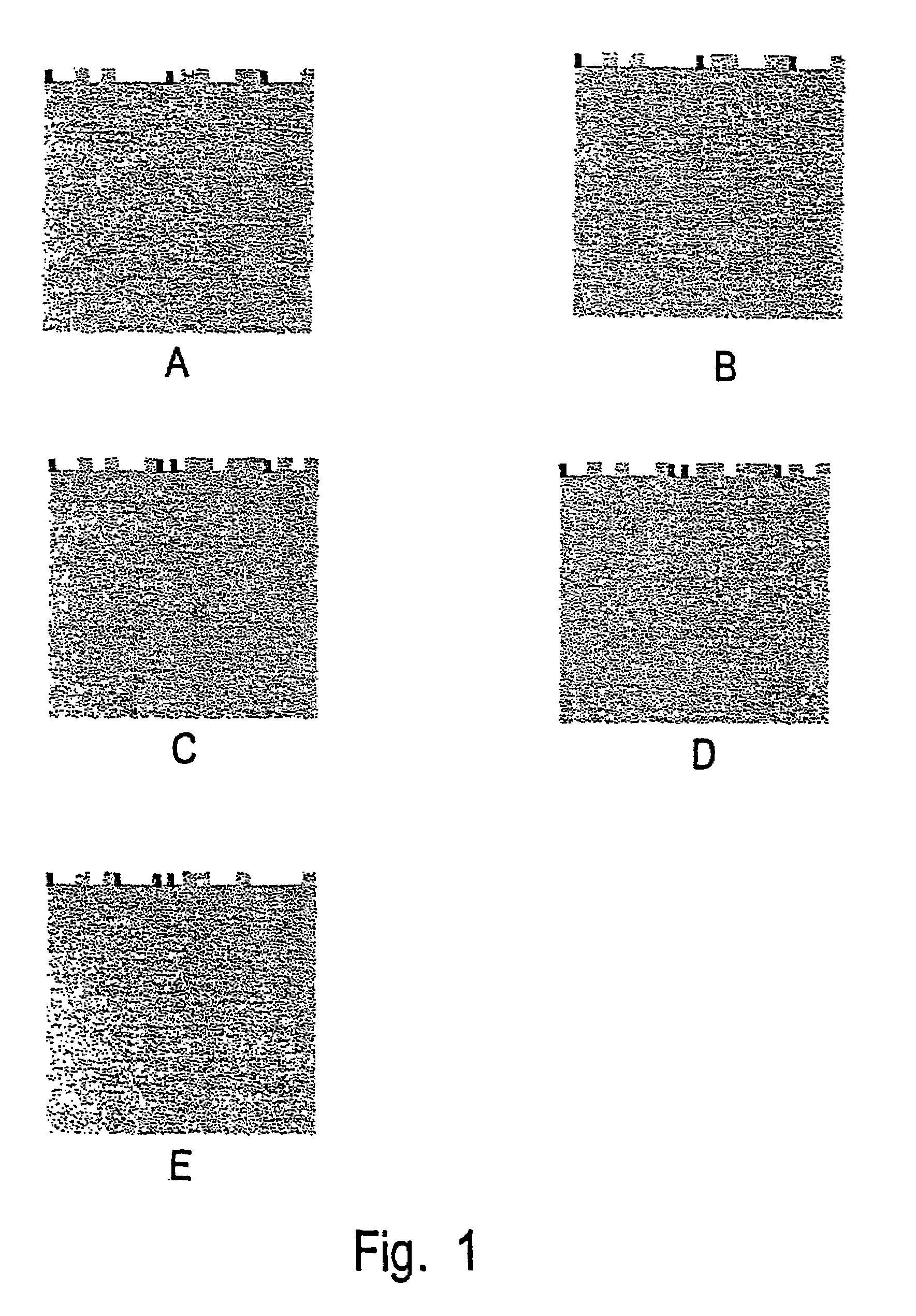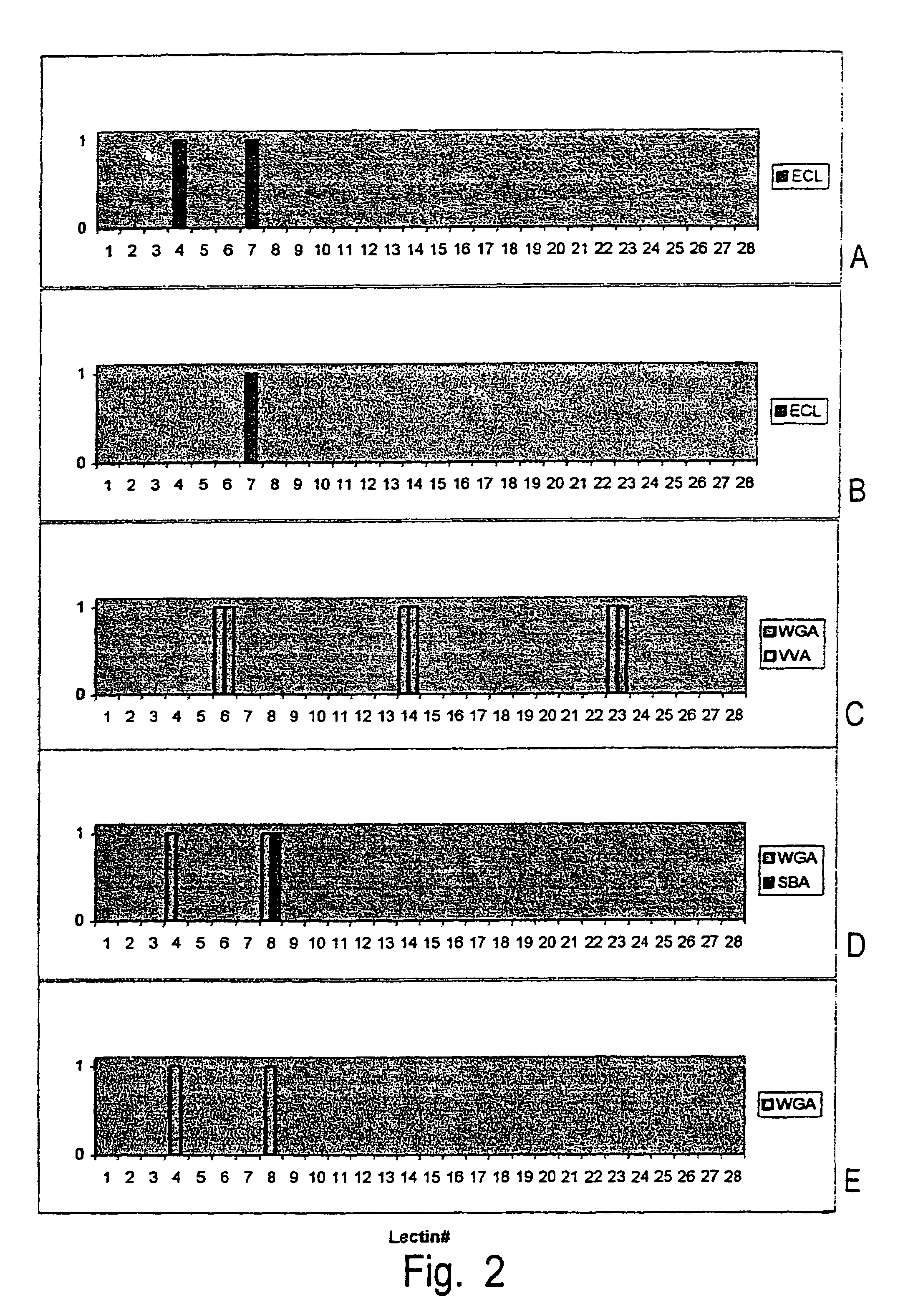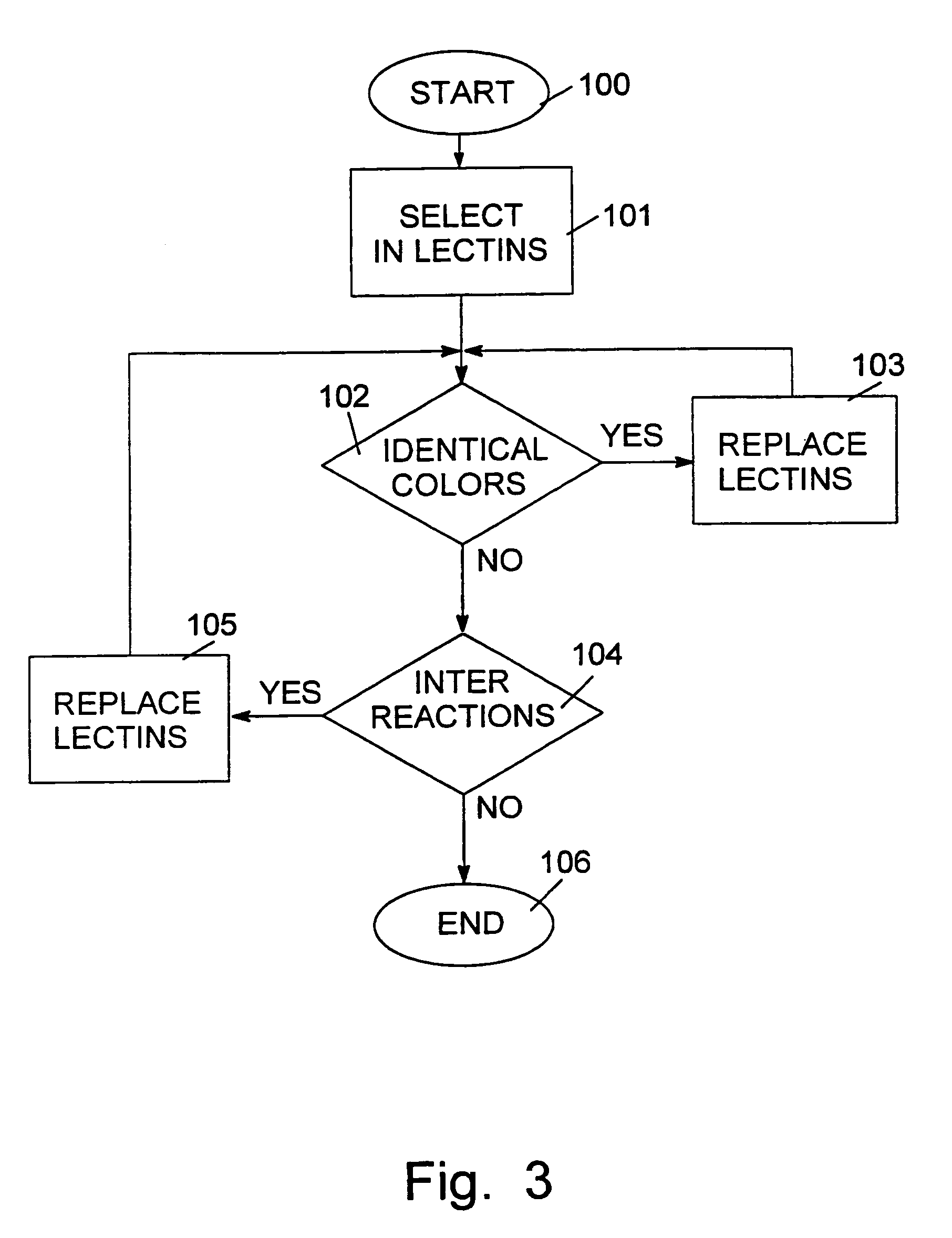Polysaccharide structure and sequence determination
- Summary
- Abstract
- Description
- Claims
- Application Information
AI Technical Summary
Benefits of technology
Problems solved by technology
Method used
Image
Examples
example 1
Glycomolecule Analysis Using Antibodies as First and Second Sequence-Specific Agents
[0161]This example further illustrates the technique of analyzing glycomolecules according to the invention. As a first and second sequence-specific agent, antibodies are used. The following tables lists the results of reactions with two different saccharides denoted for purposes of illustration, HS and NS.
[0162]The structure of the sugars is as follows:
MFLNH-II (HS):
[0163]
[0164]Table 2 lists the results of the reaction between the saccharide and the first and second essentially sequence-specific agents, which are antibodies against T-antigen, Lewisx (Lex), or Lewisb antigen (Leb). The first essentially sequence-specific agent is immobilized on a matrix, preferably a solid phase microparticle. The second essentially sequence-specific agent is labeled with a fluorescent agent, i.e., nile-red or green color. In addition, the reducing end of the saccharide is labeled, using a label clearly distinguishab...
example 2
A Scheme for the Sequential Labeling of Reducing Ends
[0177]As has been indicated in the description and example above, the method of the invention advantageously uses labeling of the saccharide to be investigated at its reducing end. However, this labeling technique may be extended to sites within the saccharide, and thus contribute to the method of the invention, by providing more information. As it is possible to label the saccharide within the chain, by cleavage using an endoglycosidase followed by labeling of the reducing end, it is therefore possible to obtain a labeled reducing end within the saccharide chain. As that reducing end is necessarily closer to the binding sites for the first, second and third essentially sequence-specific agents, compared to the original reducing end, the use of an internally created labeled reducing end provides additional information. Moreover, it is possible, by sequentially labeling of reducing ends according to the method described further bel...
example 3
Derivation of Structural Information from a Series of Reactions with Essentially Seguence-Specific Agents
[0185]This example further illustrates the method of the invention, i.e., the generation of data related to the structure of the saccharide by using a set of reactions as described further above. The example further demonstrates that sequence information can be deduced from said set of reactions.
[0186]In some cases, the reagents used may not react exactly as predicted from published data, e.g. taken from catalogs. For instance, the lectin Datura stramonium agglutinin as described further below is listed in the Sigma catalog as binding GlcNac. However, in the reactions detailed further below, DSA is shown to bind to Coumarin 120-derivatized Glc (Glc-AMC). It appears that Glc-AMC acts like GlcNac for all purposes, because of the structural similarity between these compounds. Further, as apparent from the results below, the endogalactosidase used cleaves not only at galactose residu...
PUM
| Property | Measurement | Unit |
|---|---|---|
| Fraction | aaaaa | aaaaa |
| Fraction | aaaaa | aaaaa |
| Color | aaaaa | aaaaa |
Abstract
Description
Claims
Application Information
 Login to View More
Login to View More - R&D
- Intellectual Property
- Life Sciences
- Materials
- Tech Scout
- Unparalleled Data Quality
- Higher Quality Content
- 60% Fewer Hallucinations
Browse by: Latest US Patents, China's latest patents, Technical Efficacy Thesaurus, Application Domain, Technology Topic, Popular Technical Reports.
© 2025 PatSnap. All rights reserved.Legal|Privacy policy|Modern Slavery Act Transparency Statement|Sitemap|About US| Contact US: help@patsnap.com



